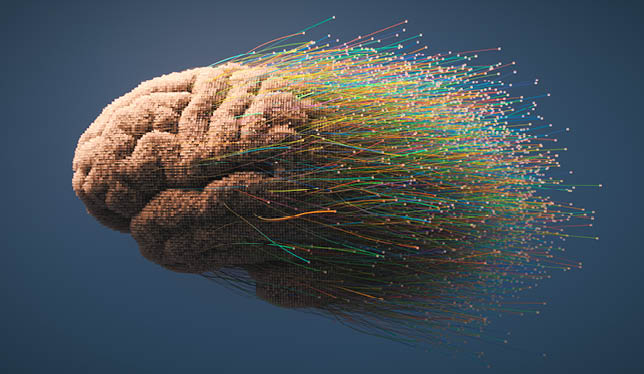AI is here to help postsecondary educators (not take over)
Using careful planning and refinement, artificial intelligence can be a valuable teaching aid for both profs and students.

Artificial Intelligence (AI) is being used increasingly in more facets of our lives, so unsurprisingly its use in education is also growing. In my five years of using AI in my postsecondary courses at two different Canadian universities, I encountered trepidation as well as numerous challenges. Based on my experience and research, I can attest to AI’s potential benefits and offer implementation tips.
My experience with AI includes teaching in-person courses that use AI to offer lab/workshop elements and two current, online courses where AI forms a primary role in delivering course material. Through surveys and discussions, I obtained my students’ thoughts (pro and con) on their AI course experiences.
How AI can help educators
I am not a technophile, so AI needs to deliver real value to impress me. One way it can do that is by eliminating time-consuming, repetitive and mundane tasks. Some universities have AI-powered chatbots on their LMS to answer student queries – thereby reducing the ubiquitous student emails where we reply yet again, “Check the syllabus.” AI handles simple queries very well, it scales seamlessly and is available around the clock (which fits students’ schedules). For queries that AI cannot handle, it directs them accordingly.
In my courses, AI is used for short answer quizzes where AI evaluates students’ answers. These quizzes allow students to put essential course concepts into their own words rather than just checking pre-set answers. AI is not yet at the level where its assessments are consistently accurate enough that they can be used for assigning grades, yet these quizzes are an engaging way to review key concepts.
At a more advanced level, AI can deliver interactive, experiential learning opportunities. One form of this is using AI for scaffolding of assignments by providing high-level feedback – such as checking that essential material is included in a first draft. Another educational technique we used involves creating virtual mentors powered by AI who use Socratic questioning to guide students through topic analysis, application and reflection.
We also created AI-powered simulations that mimic contextual environments and situational factors applicable to the course. Students learn through discussions and hands-on exercises assigned to them by virtual characters, as applicable to the narrative of the simulation. The AI provides specific feedback for iterative improvement. Simulations in education are not new, but AI can tailor interactions and direct a student’s path via individual analysis of their interactions and work. I found this customized experience and use of experiential learning leads to engaged and deeper learning. It is also in a risk-free environment, as we grade based on participation.
Addressing human concerns
As much as adding AI is a technological project, it also raises profound human concerns from faculty, teaching assistants, support staff and students. Anticipating these concerns and proactively addressing them is essential.
One of the main concerns I heard about using AI is that it will replace human staff. This has not been a goal for any of my courses. In my experience, human-powered work is still very much needed to support this technology and the students using it. All our courses still have the same amount of instructor and teaching/grading assistant involvement – the difference is the nature of some of our work has changed.
Students’ main concerns centre around user experience and interacting with AI. At present, the limits of natural language processing are manifested in AI not fully understanding students’ textual interactions. I found that as the AI interacts with more students, it gets smarter and these problems decrease, but there will still be misunderstandings as the way humans use language is complex and at times idiosyncratic. To help students interact more effectively with the AI, I prepared tutorials with communication tips (e.g., avoid slang, check spelling). We also structured our AI components such that humans (e.g., teaching assistants) can monitor students’ work and intervene to correct issues, guide students or provide additional information.
I make it a learning outcome for my students to reflect on their experience working with AI. As familiarity with AI is becoming an important job skill in many fields, it is useful for students to not only have a comprehensive AI experience, but also for them to think critically of AI’s role, benefits and obstacles.
Tips for adding AI to courses
I formerly worked in project management and digital media development, which was fortuitous as implementation of AI in my courses had challenges from start to finish. I thus share these tips to assist educators considering AI:
- Learn about AI. As a specialized technology, there is a learning curve. Take time to learn key terms and concepts and how AI can be useful for you.
- Do the course work. It is important to first determine your pedagogical approach and learning outcomes, and then consider how AI can help within this structure.
- Find an AI partner. Unless you are a computer scientist, you will need a software provider as AI is not a DIY option.
- Get a project manager. This will be a technical project with A LOT of project work. You will need someone with project management experience to shepherd the project and dev team.
- Prepare for pragmatics. As with any big project, there will be an overwhelming number of pragmatic aspects to address, such as data transfers, ILE/LMS integration, contracts, accessibility, privacy, security, etc.
- Manage expectations. Faculty, staff and students will have questions or concerns, so be proactive, clear and transparent about the role of AI, how grades are assigned, where students can find help and the continued involvement of human educators.
- Test and train. With any complex tech project, there will be bugs and usability issues, so you will need to do quality assurance testing and testing to help the AI learn. Training is also essential for instructors, TAs, grading assistants and support staff.
- Monitor, report and improve. Set up methods to report issues, monitor student progress, gather student feedback and use this to iterate and improve.
Within postsecondary education, AI-powered elements range from the mundane (chatbots handling everyday student questions) to the advanced (delivering interactive, experiential learning opportunities). There are legitimate concerns and obstacles, but being proactive and open helps. Even though AI in postsecondary education is in its infancy, it is already helping deliver engaging and effective education not otherwise possible or viable. With careful planning and refinement, AI can thus be a valuable teaching aid.
Glen Farrelly is an assistant professor in the faculty of business at Athabasca University.
Featured Jobs
- Economics - Associate/Full Professor of TeachingThe University of British Columbia
- Electrical and Computer Engineering - Assistant/Associate ProfessorWestern University
- Electrical Engineering - Assistant Professor (Electromagnetic/Photonic Devices and Systems)Toronto Metropolitan University
- Indigenous Studies - Assistant Professor, 1-year termFirst Nations University of Canada














Post a comment
University Affairs moderates all comments according to the following guidelines. If approved, comments generally appear within one business day. We may republish particularly insightful remarks in our print edition or elsewhere.